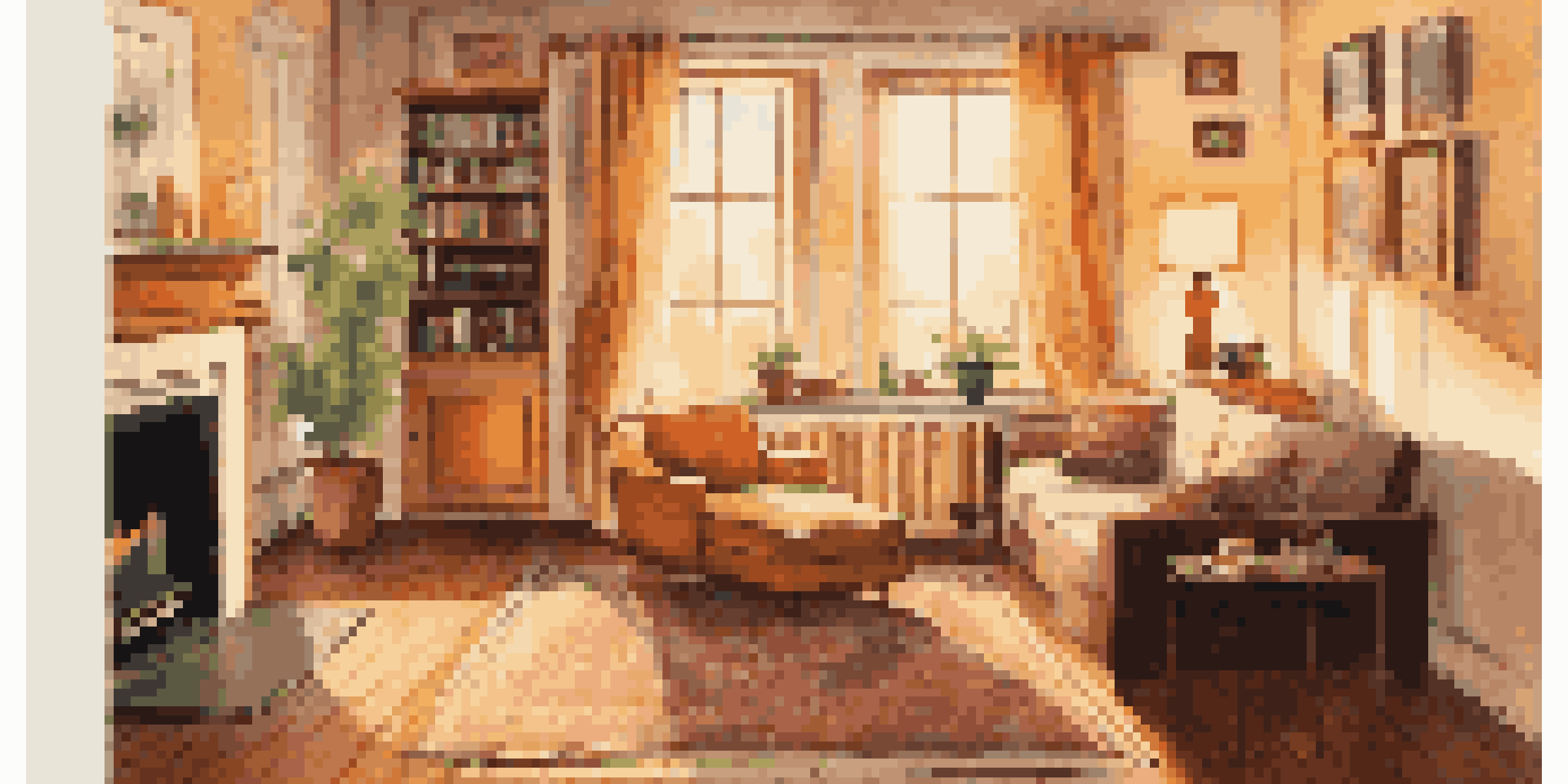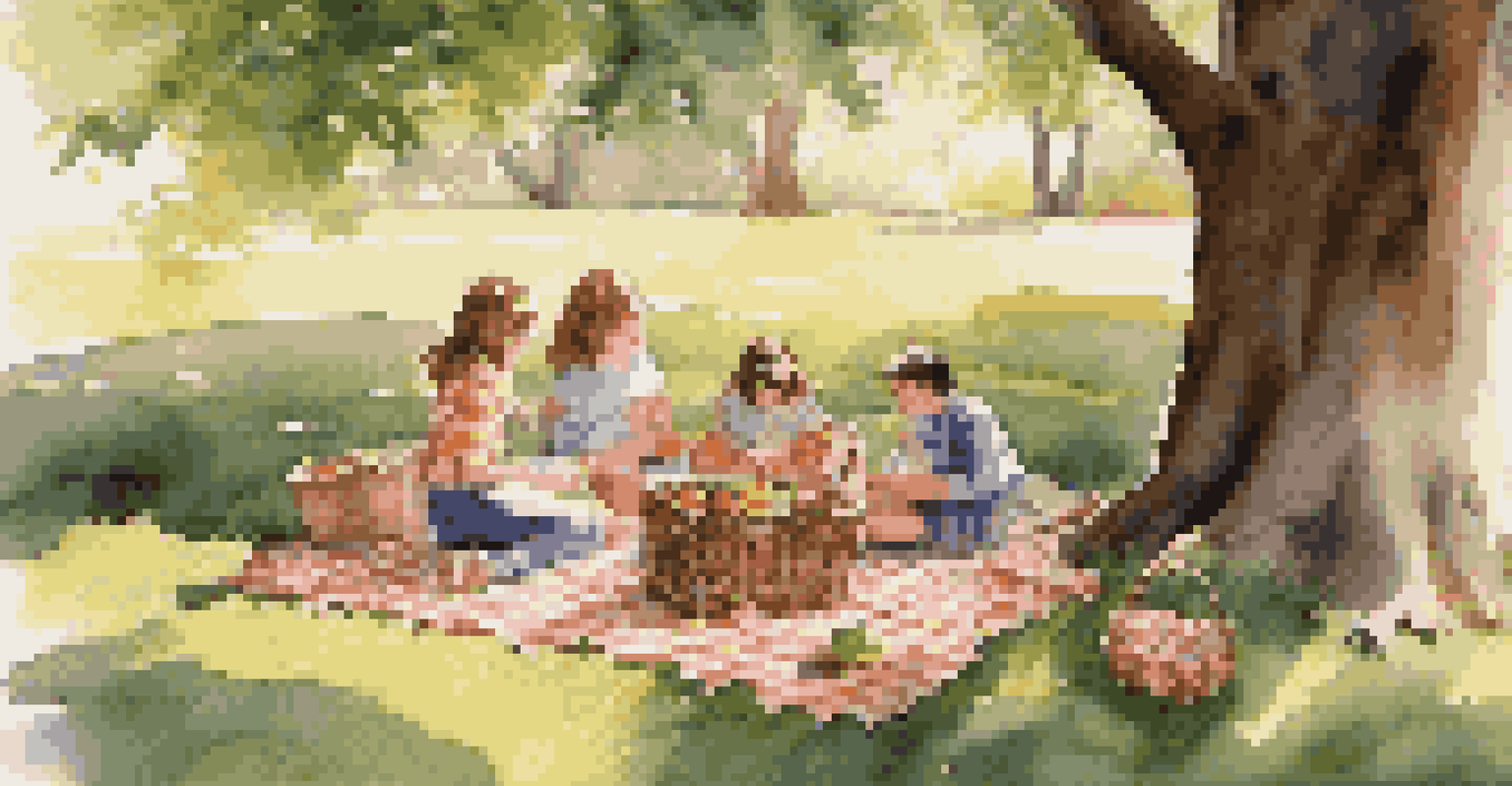The Art of Nostalgia: Composing Music that Evokes Memories

Understanding Nostalgia: A Deep Dive into Emotions
Nostalgia is more than just a sentimental longing; it’s an emotional experience that can transport us back in time. When we hear a certain song, it often brings back vivid memories of people, places, or events from our past. This deep-seated connection between music and memory is what makes nostalgia such a powerful tool for composers.
Nostalgia is a dirty liar that insists things were better than they seemed.
The science behind nostalgia reveals that it activates specific areas of the brain tied to emotion and memory. This connection allows music to serve as a trigger, igniting feelings that may have been dormant for years. Understanding this interplay can help musicians tap into that emotional reservoir, crafting melodies that resonate deeply with listeners.
By recognizing the elements that evoke nostalgia, composers can create pieces that not only sound beautiful but also resonate on a personal level. This understanding is essential for anyone looking to master the art of nostalgic composition.
Key Elements of Nostalgic Music: What to Include
When composing nostalgic music, certain elements can enhance the emotional experience. For example, using familiar chord progressions or instrumentation can evoke feelings of nostalgia. Think of the warm, soothing tones of an acoustic guitar or the gentle sweep of strings that can instantly transport a listener to a cherished memory.

Melody plays a crucial role in this process as well. A simple, memorable tune can linger in the mind long after the music has stopped, much like a cherished childhood song. Crafting melodies that are easy to hum or sing along with can create an instant connection, drawing listeners into their own memories.
Nostalgia Connects Music and Memory
Nostalgia activates emotional areas in the brain, allowing music to serve as a powerful trigger for recalling vivid memories.
Additionally, the use of tempo and rhythm can significantly affect the nostalgic quality of a piece. Slower tempos often evoke reflection and longing, while a slightly upbeat rhythm can add a sense of warmth and joy, reminding us of happier times.
Harnessing Personal Memories in Your Compositions
One of the most effective ways to create nostalgic music is to draw from your personal experiences. Think about moments that have shaped you—whether they are joyful or bittersweet—and consider how you can translate those feelings into sound. This authenticity can resonate with listeners who may share similar experiences.
Music can change the world because it can change people.
For instance, a composer might recall family gatherings around a piano, leading them to create a piece that captures the warmth and happiness of those times. By embedding personal memories into compositions, musicians can create a relatable and evocative soundscape that speaks to their audience's hearts.
As you explore your own memories, consider incorporating specific sounds or styles that remind you of those moments. This can add a layer of depth and authenticity, making your music even more impactful.
The Role of Lyrics in Evoking Nostalgia
When it comes to nostalgic music, lyrics hold immense power. They can tell a story, paint a picture, or evoke a feeling that resonates deeply with listeners. A well-crafted lyric can remind someone of a love lost, a childhood friend, or a significant life event, making the music even more poignant.
For example, songs like 'Summer of '69' by Bryan Adams encapsulate specific memories through vivid storytelling, transporting listeners back to a particular time in their lives. This ability to evoke nostalgia through lyrics is essential for songwriters looking to create emotionally charged music.
Personal Experiences Enhance Compositions
Drawing from personal memories in music can create relatable and evocative soundscapes that resonate deeply with listeners.
When writing lyrics, consider using imagery and specific details that can trigger memories. Avoid vague phrases; instead, focus on capturing the essence of experiences that listeners can relate to, allowing them to connect on a deeper level.
Incorporating Cultural and Historical Context in Music
Cultural and historical contexts play a significant role in how nostalgia is perceived. Different generations have unique experiences tied to specific musical styles and genres. Incorporating elements from a particular era can evoke strong feelings of nostalgia for those who lived through it.
For instance, using vintage sounds or production techniques reminiscent of the '70s or '80s can transport listeners back to their youth. This connection between music and cultural touchstones is a powerful tool for composers, allowing them to evoke shared memories among their audience.
Understanding the cultural backdrop of your audience can guide your creative choices, helping you craft music that resonates on a broader scale. By tapping into these shared experiences, you can create a sense of community through your compositions.
The Power of Sound Design: Creating Nostalgic Atmospheres
Sound design is a crucial aspect of composing nostalgic music. The textures, layers, and effects that you choose can significantly impact the emotional response from your audience. For instance, adding reverb or echo can create a sense of space and depth, reminiscent of a distant memory.
Using vintage instruments or synths can also enhance the nostalgic quality of a piece. Think of the warm, rich tones of a vintage keyboard or the crackling sound of an old vinyl record; these elements can evoke a sense of nostalgia, transporting listeners back to a different time.
Lyrics and Context Fuel Nostalgic Feelings
Well-crafted lyrics and cultural context can evoke strong feelings of nostalgia, making music more emotionally charged and relatable.
Experimenting with soundscapes and ambient noises can further enhance the emotional depth of your music. Incorporating sounds like birds chirping or the gentle sound of waves can create a vivid atmosphere, allowing listeners to immerse themselves in the memory you’re trying to evoke.
Sharing Your Music: The Journey of Nostalgia
Once you’ve composed your nostalgic piece, sharing it with others is where the magic truly happens. Music has the power to connect people, and your composition may evoke memories for your listeners that you never intended. This shared experience can foster a sense of community and understanding.
Consider performing your music live, where the energy and emotion can be palpably felt by an audience. Live performances often amplify the nostalgic experience, allowing listeners to feel the music in a more profound way. It’s an opportunity for them to reflect on their own memories while enjoying your creation.

In a digital age, sharing your music online can also reach a broader audience. Platforms like social media or streaming services allow listeners from different backgrounds to connect with your work, potentially evoking nostalgia for experiences they’ve had, creating a ripple effect of shared memories.